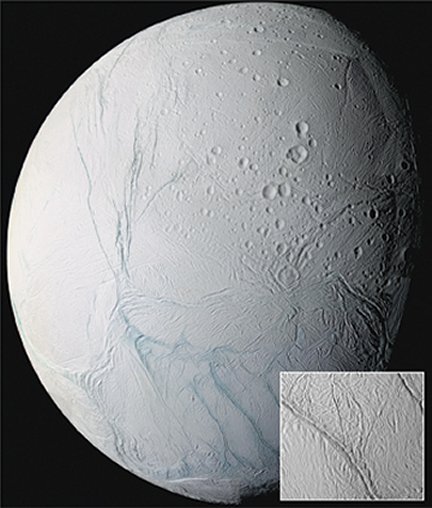Cassini eyes youthful-looking Saturnian moon
On July 14, the Cassini spacecraft came within 175 kilometers of Saturn’s tiny moon Enceladus, the nearest that the craft has come to any of the ringed planet’s satellites. Images taken at close range reveal a terrain of faults, folds, and ridges nearly devoid of craters. That landscape suggests that old pockmarks have been erased by recent geological activity, perhaps only tens of millions of years ago.

The false-color image above shows long fractures (blue), about 100 meters wide. Fractures, including those in the inset, may release icy material that vaporizes, contributing to the thin atmosphere that Cassini previously detected around Enceladus (SN: 4/16/05, p. 253: Available to subscribers at A moon with atmosphere). It’s still a mystery why this moon, only 500 km in diameter, exhibits such diverse topographic features, says Cassini scientist Carolyn Porco of the Space Science Institute in Boulder, Colo.







